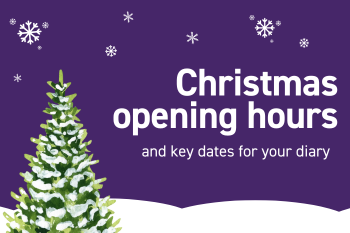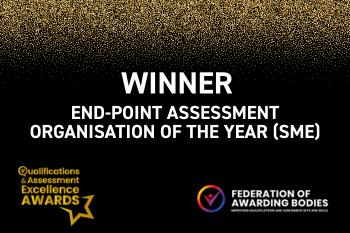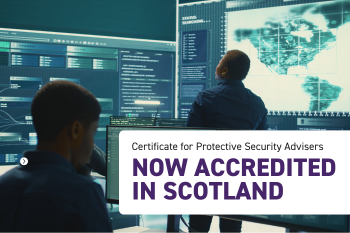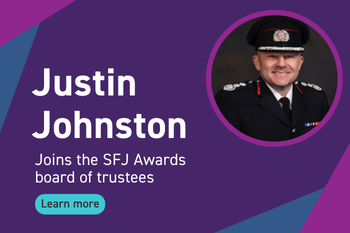What is a professional discussion in an assessment?
Professional discussion is a planned, in-depth, two-way conversation between assessor and learner.
The benefits of using a professional discussion as an assessment method are:
- It’s an effective way of assessing complex understanding and knowledge
- It can be an efficient use of time
- It’s a holistic assessment method as it evaluates learners’ knowledge, skills and behaviours in an integrated and comprehensive way.
Additionally, a professional discussion can help learners who find it difficult to provide written evidence, making it a more inclusive assessment method. It can also be used as an assessment method to confirm authenticity where this is questionable, or to stop any gaps in the learners’ product evidence.
Misconceptions about professional discussions
There are several common misconceptions about professional discussions when used as an assessment method. Here are some of the most frequent ones we hear:
- Misconception 1: It’s just a chat
Reality: While it may feel conversational, a professional discussion is a structured, formal assessment method. It is guided by specific criteria to evaluate competence against a standard. - Misconception 2: It’s easier than other assessments
Reality: Some believe it’s a “soft option”, but it actually requires deep understanding, critical thinking, and the ability to articulate and justify decisions. It can sometimes be more challenging than written assessments because it demands real-time responses and reflection. - Misconception 3: It doesn’t need preparation
Reality: Learners must prepare thoroughly. Some good ways apprentices can prepare include reviewing their portfolio, reflecting on experiences, and aligning their examples with assessment criteria. Going in unprepared can lead to missed opportunities to demonstrate competence. - Misconception 4: It’s subjective
o Reality: While it involves human judgement, professional discussions are based on clear, standardised criteria. Assessors are trained to ensure consistency, fairness, and objectivity.
How to plan for professional discussion?
Preparation for the professional discussion is not just on the side of the learners. Assessors should plan appropriately for each professional discussion too.
It’s important for assessors to prepare ‘thoughtful’ questions and use the right kind of language that is easy for the learner to understand.
The assessor must be skilled in putting the learner at ease and be able to adapt their own behaviour and demonstrate sensitivity, using non-verbal as well as verbal cues.
Assessors need to remember to keep quiet – wait for thinking to take place and ask probing questions where appropriate. For example, “what specifically led you to say that? ”And?” “So?” “Because?”. They should resist the temptation to speak if there is an awkward silence whilst the learner is thinking.
The professional discussion needs to be time managed – 30 minutes of ‘quality’ discussion is much better than over an hour of ‘erming’. It should be a short but rich discussion.
The questions posed should be sequenced to successively lift or extend thinking, moving the learner from narrow to broader aspects. It’s helpful to ask the learner easier questions before to put them at ease before progressing on to more complex questions.
It’s also important to ensure you don’t ask to many questions all at once, give the learner time to think and process one question at a time. Be careful when you ask questions to ensure you don’t accidentally answer it yourself in your wording.
How are professional discussions evidenced and marked?
Creating an audit trail by recording the discussion helps the assessor, the learner, the IQA and the EQA, and it formalises the professional discussion.
The discussion can be recorded in a number of different ways.
It can be handwritten notes on a suitably drafted document, but audio recording is preferable. It MUST be referenced to the unit and criteria that are being claimed. If handwritten notes are taken by the assessor, it is good practice for the learner to authenticate them and confirm them as a true record of the conversation. If audio is recorded, it is important that the learning outcomes and the assessment criteria are mapped to the recording – ideally with the time when the criteria was addressed in the discussion, e.g. 1m 55 secs, 3.1, 2m 43 secs 5.4 and 5.5, etc.
Digital recordings are used to capture professional discussions, which are then saved and included as part of the learner’s evidence. The assessment criteria are annotated to indicate where they have been addressed or met, making excellent use of the technology available to us.
SFJ Awards as an End-Point Assessment organisation
SFJ Awards is a trusted, independent End-Point Assessment, supporting a wide range of popular apprenticeships across both the public and private sectors. With extensive expertise in designing tailored assessments for each standard, we ensure quality and relevance every step of the way.
Discover more about the apprenticeship standards we assess →





